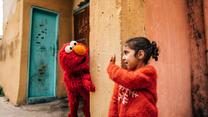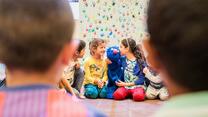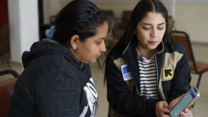Supporting Adolescents and their Families in Emergencies (SAFE) is a protection and psychosocial support program model to strengthen the capacity of front-line actors so that adolescent girls and boys (ages 10-19) are safer, more supported, and equipped with positive coping strategies in acute emergencies. SAFE aims to make adolescent girls and boys more visible and heard in the first phase of an emergency response.
To achieve its goal, the SAFE program model is designed around two pillars: (1) Working directly with adolescent girls and boys to provide them with essential health and safety information, encourage participation and develop social and emotional skills, strengthen relationships, and connect them with available support services; and, (2)Contributing to a safe and supportive environment for adolescent girls and boys through working with female and male caregivers to develop their knowledge of how to protect and support adolescents, and collaborating with the community, other sectors and services providers to increase awareness of the needs and interests of adolescents.
SAFE was developed with funding from OFDA between December 2017 and December 2019, led by an inter-disciplinary team of the Violence Prevention and Response technical unit and in collaboration with technical advisors from Health, Education, and Emergency Response, as well as with front-line protection staff, adolescent girls and boys and their female and male caregivers, and a reference group of academics and peer practitioners. Content and guidance in SAFE were adapted from a range of existing and tested sources, such as the IRC’s Girl Shine and Safe Healing and Learning Spaces (SHLS) Parenting Skills programs, the UNICEF Adolescent Kit for Expression and Innovation, and the Compact for Young People in Humanitarian Action Inter Agency Guidelines, among others.
Two rounds of field testing were conducted, in Nigeria and Central African Republic during 2018 and 2019, reaching over 400 adolescent girls and boys and 200 female and male caregivers. The goal of this process was to generate user and beneficiary feedback in order to strengthen the relevance and accessibility of the approach and content.
The SAFE Resource Package is publicly available and includes practical field-friendly implementation guidance, detailed facilitator training manuals and three tailored curricula – for adolescent girls, for adolescent boys, and for caregivers. A selection of content has been translated into French and Arabic. The package has been designed in Word to enable direct adaptation and further translation. To get more familiar with SAFE, please start with the Overview and Implementation Guide.



